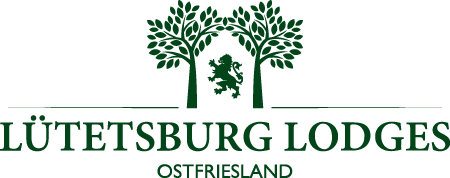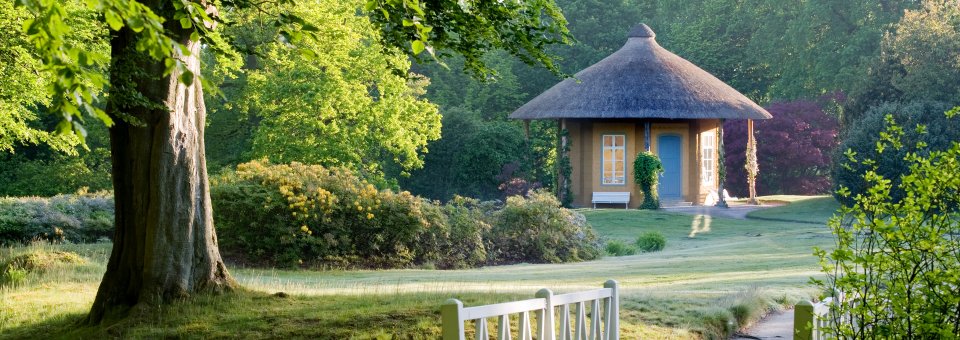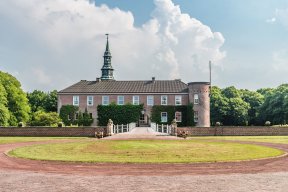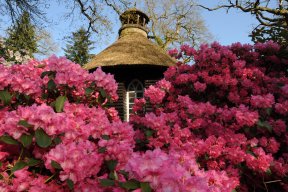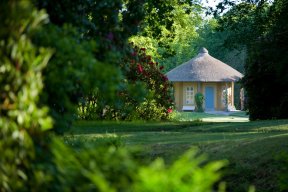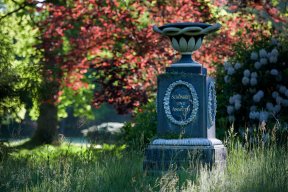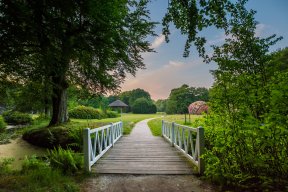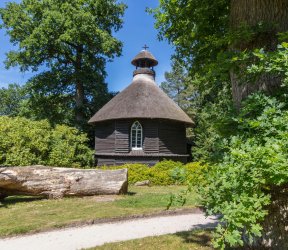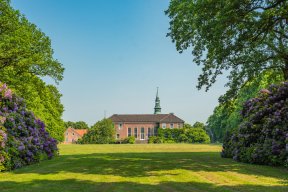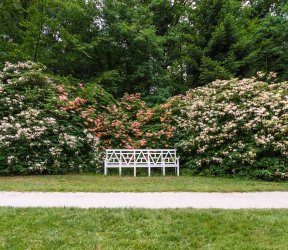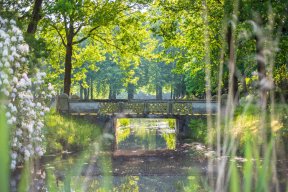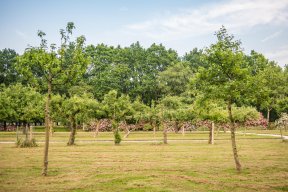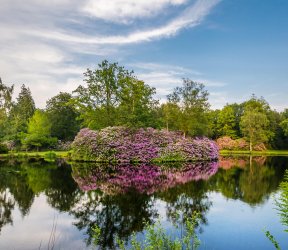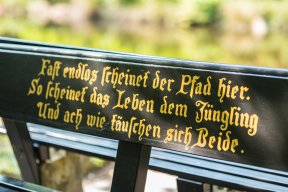The first traces of today's Schloss Lütetsburg date back to the beginning of the 13th century. The chieftain dynasty of Manninga, at that time influential East Frisians, had a so-called Uthof, an outer courtyard, built in 1212. In the 14thcentury, Lütet I. Manninga built a stone house on this site. Today he is the patron saint of the place and the castle.
In the following centuries Lütetsburg was the headquarters of powerful barons but also was destroyed again and again by raging battles in the surroundings. Finally, in the 16th century, the castle, which had been rebuilt several times, was extended by an outer bailey. This outer bailey still exists today, for the most part in its original form.
In 1588, Hyma Manninga married the imperial baron Wilhelm zu Innhausen und Knyphausen and the magnificent estate passed into the ownership of the family zu Inn- und Knyphausen. Still today, the Family zu Inn- und Knyphausen owns this wonderful piece of contemporary history.
Address:
Schlosspark Lütetsburg
Landstr. 39 | 26524 Lütetsburg
The carpark is situated opposite the entrance.
Opening times:
The gardens are open all year round, with opening hours during the following:
May-September: 8am-9pm
October-April: 10am-5pm
.
The founding of the famous gardens in the style of an English landscaped garden goes back to the imperial baron Edzard Mauritz zu Inn- und Knyphausen, who had it redesigned in 1790. In previous centuries, the rulers of Lütetsburg castle had already built a large baroque garden around it, but it had become very overgrown and was therefore to be redesigned.
Throughout his whole life, Edzard Mauritz cared for the gardens with extraordinary dedication and attention to detail. He had stone sculptures built and monuments created, many of them with connections to his personal life and the family. The many small buildings in the park, such as the Temple of Friendship or the Nordic Chapel, were designed and built upon his order. These buildings can still be admired today in the castle park.
The following generations of the zu Inn- und Knyphausens continued to take care of the castle grounds, but hardly made any changes to it. It was not until the early 18th century that new colors were brought to the park by extensive planting of rhododendrons and azaleas. These can still be seen in the park today and offer a colorful natural landscape during the main flowering season in May and June.
Like many other areas in the East Frisian region, the castle and the park were severely damaged by bombings during the Second World War. The then Prince Wilhelm Edzard rebuilt the park and then had generous extensions created, which still exist in their form today.
In the meantime, Schlosspark Lütetsburg has become the largest (and perhaps most beautiful) private castle grounds in the style of an English landscaped garden in northern Germany. With a total size of 30 hectares, it offers many kilometers of lovingly landscaped hiking trails. Around 150 different tree and shrub species from all over the world can be admired in the park, whereby it shows different facets of its beauty in every season.
The gardens are open all year round and a must see on every visit to the beautiful East Frisian North Sea coast.
